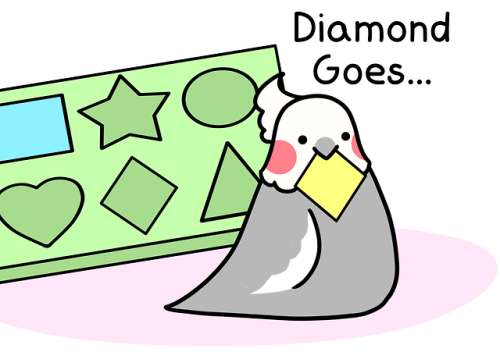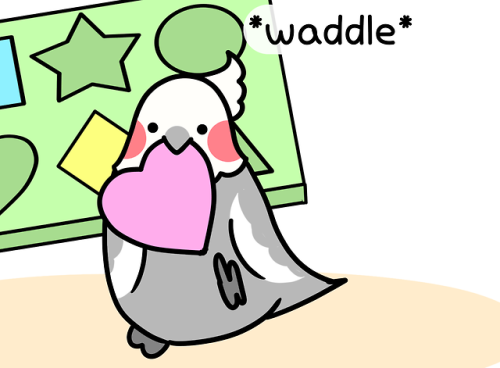I Am Loved.







I am loved.
More Posts from Leafyfern and Others

⛅

Monty rested his little head in my hand and my heart almost exploded. 💚😭
biggest betrayal is when it’s supposed to thunderstorm and it doesn’t



Here’s an odd one: the skull of the only known “narluga”, a possible narwhal/beluga whale hybrid. It was killed by a Greenlandic hunter around 1987 and the skull was lying on top of a toolshed in 1990 when it was noticed by a visiting scientist. According to the hunter, the animal was a uniform grey color (as opposed to the mottled narwhal and the white beluga), with the tail of a narwhal but the pectoral flippers of a beluga whale.
The skull is larger than both parent species’ and its teeth a strange mixture of both. Narwhals don’t have teeth except for the single large tusk of the male, while beluga whales have a full set of smaller teeth. The narluga seems to have a full set of teeth but some of them are strangely elongated and oriented like narwhal tusks, as seen in the third picture. The unusual dentition didn’t seem to bother the animal since it reached a great size but it would presumably have been sterile as most hybrids are. No other examples of narwhal/beluga whale hybrids have been found.
The skull is currently housed at the Zoological Museum of Copenhagen.


im really drinkin my love and respect reptiles+amphibians juice today, so if u have a pet of the reptilian or amphibious type, rb and add pics pls




The golden hour




gynandromorphism in spiders
a gynandromorph is an organism that exhibits male and female characteristics. bilateral asymmetry can occur wherein one “side” of the animal is female and the other is male, mosaicism can occur wherein the characteristics are distributed in patches. in spiders, this phenomenon can present itself through presence of both testes and overies and split colouration. cases can also occur where, although parts of the spider are clearly male or female, the divisions can be less definite; certain reproductive organs like the palps and epigyne may be very poorly developed or completely absent. these individuals are referred to as intersexes. gynandry and intersexuality can occur in the same individual.
pictured: lampropelma nigerrimum, pamphobeteus sp. mascara, poecilotheria ornata, thyene imperialis.
One of these things is not like the others!
This handsome skull belongs to an iguana.


These all belong to water monitors.





And this one belongs to a tegu.


The tegu’s skull is missing a hole!
Those little openings on the top of the monitors’ heads and the iguana’s is where the pineal eye is located. The pineal eye can distinguish between light and dark, and helps with thermoregulation. But tegus don’t have it! They lost their pineal eye sometime during the course of their evolution- which is evidence of how even though they might look a bit like monitors, they really aren’t that closely related!



Hey so what the FUUUUUUCK happened in this beetle’s evolution??? For that matter why didn’t I know about these if they’re a “common wood-boring pest???”
https://www.nature.com/articles/srep27364 Under “normal” circumstances, they don’t form adults and the larva simply clones new larvae that eat their way out of the “mother larva.” If exposed to extreme heat, they’ll pupate and turn into little beetles like their ancestors did, and the little beetles go through a whole elaborate courtship period where the females fight with each other over territory and try to mount males or each other (apparently the first time same-sex coupling was observed in a beetle), with both sexes having unique little dances to communicate with each other. If I’m reading correctly the male has a mating display while the female has like a little “rejection dance” I think? And then it doesn’t matter because all adults are sterile so the population just dies off.
-
 malthuslover liked this · 1 week ago
malthuslover liked this · 1 week ago -
 saltysugarbird reblogged this · 7 months ago
saltysugarbird reblogged this · 7 months ago -
 saltysugarbird liked this · 7 months ago
saltysugarbird liked this · 7 months ago -
 66789 reblogged this · 7 months ago
66789 reblogged this · 7 months ago -
 quack-n-cheese liked this · 1 year ago
quack-n-cheese liked this · 1 year ago -
 stupidfab liked this · 1 year ago
stupidfab liked this · 1 year ago -
 letsgetilluminaughty reblogged this · 1 year ago
letsgetilluminaughty reblogged this · 1 year ago -
 disneyfreakgeek reblogged this · 1 year ago
disneyfreakgeek reblogged this · 1 year ago -
 dragonhuntress150 reblogged this · 1 year ago
dragonhuntress150 reblogged this · 1 year ago -
 dragonhuntress150 liked this · 1 year ago
dragonhuntress150 liked this · 1 year ago -
 letsgetilluminaughty reblogged this · 1 year ago
letsgetilluminaughty reblogged this · 1 year ago -
 letsgetilluminaughty liked this · 1 year ago
letsgetilluminaughty liked this · 1 year ago -
 tetralunastuff liked this · 1 year ago
tetralunastuff liked this · 1 year ago -
 potionhero reblogged this · 1 year ago
potionhero reblogged this · 1 year ago -
 jennplanet reblogged this · 1 year ago
jennplanet reblogged this · 1 year ago -
 squidelyfish liked this · 1 year ago
squidelyfish liked this · 1 year ago -
 itsbansheebitch reblogged this · 1 year ago
itsbansheebitch reblogged this · 1 year ago -
 banshee-list-008 reblogged this · 1 year ago
banshee-list-008 reblogged this · 1 year ago -
 itsbansheebitch liked this · 1 year ago
itsbansheebitch liked this · 1 year ago -
 the-mystical-aquatic-gay reblogged this · 1 year ago
the-mystical-aquatic-gay reblogged this · 1 year ago -
 the-mystical-aquatic-gay liked this · 1 year ago
the-mystical-aquatic-gay liked this · 1 year ago -
 maramagpie reblogged this · 1 year ago
maramagpie reblogged this · 1 year ago -
 justacrowdle reblogged this · 1 year ago
justacrowdle reblogged this · 1 year ago -
 justacrowdle liked this · 1 year ago
justacrowdle liked this · 1 year ago -
 eeveeofstewjon liked this · 1 year ago
eeveeofstewjon liked this · 1 year ago -
 smittenvixen13 reblogged this · 1 year ago
smittenvixen13 reblogged this · 1 year ago -
 the-mooses-butler reblogged this · 1 year ago
the-mooses-butler reblogged this · 1 year ago -
 worlddaikokonat liked this · 1 year ago
worlddaikokonat liked this · 1 year ago -
 starredforest reblogged this · 1 year ago
starredforest reblogged this · 1 year ago -
 starredforest liked this · 1 year ago
starredforest liked this · 1 year ago -
 shadowgatehyperfixations liked this · 1 year ago
shadowgatehyperfixations liked this · 1 year ago -
 just-a-quail liked this · 1 year ago
just-a-quail liked this · 1 year ago -
 oraclebell17 liked this · 1 year ago
oraclebell17 liked this · 1 year ago -
 hell-where-i-belong liked this · 1 year ago
hell-where-i-belong liked this · 1 year ago -
 bugonplant liked this · 1 year ago
bugonplant liked this · 1 year ago -
 friendsofthefairies reblogged this · 1 year ago
friendsofthefairies reblogged this · 1 year ago -
 friendsofthefairies liked this · 1 year ago
friendsofthefairies liked this · 1 year ago -
 onyxedskies liked this · 1 year ago
onyxedskies liked this · 1 year ago -
 onyxedskies reblogged this · 1 year ago
onyxedskies reblogged this · 1 year ago -
 aptericia reblogged this · 1 year ago
aptericia reblogged this · 1 year ago -
 aptericia liked this · 1 year ago
aptericia liked this · 1 year ago -
 bl1tzm1k3 liked this · 1 year ago
bl1tzm1k3 liked this · 1 year ago -
 vicsw45 liked this · 1 year ago
vicsw45 liked this · 1 year ago -
 whatsupwithjinx liked this · 1 year ago
whatsupwithjinx liked this · 1 year ago -
 itskarmalone reblogged this · 1 year ago
itskarmalone reblogged this · 1 year ago -
 the-names-catastrophe liked this · 1 year ago
the-names-catastrophe liked this · 1 year ago -
 star-the-gremlin reblogged this · 1 year ago
star-the-gremlin reblogged this · 1 year ago -
 star-the-gremlin liked this · 1 year ago
star-the-gremlin liked this · 1 year ago -
 jesibeii liked this · 1 year ago
jesibeii liked this · 1 year ago

skull and spider enthusiast//check out @voooorheestaurus sun moon & rising
201 posts